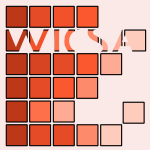52 papers:
 WICSA-2015-TamburriN #architecture #social
WICSA-2015-TamburriN #architecture #social- When Software Architecture Leads to Social Debt (DAT, EDN), pp. 61–64.
 KDD-2015-DuncanE #modelling #probability
KDD-2015-DuncanE #modelling #probability- Probabilistic Modeling of a Sales Funnel to Prioritize Leads (BAD, CPE), pp. 1751–1758.
 KDD-2015-PotashBLMRWRJMG #health #modelling #predict
KDD-2015-PotashBLMRWRJMG #health #modelling #predict- Predictive Modeling for Public Health: Preventing Childhood Lead Poisoning (EP, JB, AL, SM, AR, JW, ER, EJ, RM, RG), pp. 2039–2047.
 ESEC-FSE-2015-MahallySB #case study #development
ESEC-FSE-2015-MahallySB #case study #development- Barriers and enablers for shortening software development lead-time in mechatronics organizations: a case study (MMM, MS, JB), pp. 1006–1009.
 ICSE-v1-2015-MatichukMAJKS #empirical #formal method #towards #verification
ICSE-v1-2015-MatichukMAJKS #empirical #formal method #towards #verification- Empirical Study Towards a Leading Indicator for Cost of Formal Software Verification (DM, TCM, JA, DRJ, GK, MS), pp. 722–732.
 QoSA-2013-Satyanarayanan #convergence #named
QoSA-2013-Satyanarayanan #convergence #named- Cloudlets: at the leading edge of cloud-mobile convergence (MS), pp. 1–2.
 CHI-2013-AgapieGQ #people #query
CHI-2013-AgapieGQ #people #query- Leading people to longer queries (EA, GG, PQ), pp. 3019–3022.
 KDD-2013-AggourH #information management
KDD-2013-AggourH #information management- Financing lead triggers: empowering sales reps through knowledge discovery and fusion (KSA, BH), pp. 1141–1149.
 KDD-2013-WangDYWCSI #clustering #data mining #framework #identification #mining #towards
KDD-2013-WangDYWCSI #clustering #data mining #framework #identification #mining #towards- Towards long-lead forecasting of extreme flood events: a data mining framework for precipitation cluster precursors identification (DW, WD, KY, XW, PC, DLS, SI), pp. 1285–1293.
 HILT-2012-BeltCHR #ada #automation #contract #using #verification
HILT-2012-BeltCHR #ada #automation #contract #using #verification- Leading-edge Ada verification technologies: highly automated Ada contract checking using bakar kiasan (JB, PC, JH, R), pp. 3–4.
 HILT-2012-Kanig #ada #testing #verification
HILT-2012-Kanig #ada #testing #verification- Leading-edge ada verification technologies: combining testing and verification with GNATTest and GNATProve — the hi-lite project (JK), pp. 5–6.
 CASE-2011-ZanasiC #design #visual notation
CASE-2011-ZanasiC #design #visual notation- Direct method for digital lead-lag design: analytical and graphical solutions (RZ, SC), pp. 804–809.
 ICSM-2011-Briand #re-engineering #research
ICSM-2011-Briand #re-engineering #research- Useful software engineering research — leading a double-agent life (LCB), p. 2.
 DUXU-v1-2011-BiesterfeldtC #research #user interface
DUXU-v1-2011-BiesterfeldtC #research #user interface- Leading International UX Research Projects (JB, MC), pp. 368–377.
 HCI-UA-2011-BilalE #query #web
HCI-UA-2011-BilalE #query #web- Evaluating Leading Web Search Engines on Children’s Queries (DB, RE), pp. 549–558.
 HCI-UA-2011-KimuraF #communication #comprehension #design
HCI-UA-2011-KimuraF #communication #comprehension #design- Design of Communication Field for Leading to Satisfied Understanding: Example of High-Level Radioactive Waste Disposal in Japan (HK, MF), pp. 354–359.
 ICSE-2011-CataldoH #analysis #development #empirical #feature model #integration
ICSE-2011-CataldoH #analysis #development #empirical #feature model #integration- Factors leading to integration failures in global feature-oriented development: an empirical analysis (MC, JDH), pp. 161–170.
 ICPR-2010-CoutinhoFF #identification #parsing #using
ICPR-2010-CoutinhoFF #identification #parsing #using- One-Lead ECG-based Personal Identification Using Ziv-Merhav Cross Parsing (DPC, ALNF, MATF), pp. 3858–3861.
 KDIR-2010-ExmanP #web
KDIR-2010-ExmanP #web- Lead Discovery in the Web (IE, MP), pp. 471–474.
 HPCA-2010-GreskampKT #configuration management #multi #named #performance #thread
HPCA-2010-GreskampKT #configuration management #multi #named #performance #thread- LeadOut: Composing low-overhead frequency-enhancing techniques for single-thread performance in configurable multicores (BG, URK, JT), pp. 1–12.
 DAC-2009-AlimohammadFC #verification
DAC-2009-AlimohammadFC #verification- FPGA-based accelerator for the verification of leading-edge wireless systems (AA, SFF, BFC), pp. 844–847.
 ICML-2009-SzitaL #learning #polynomial
ICML-2009-SzitaL #learning #polynomial- Optimistic initialization and greediness lead to polynomial time learning in factored MDPs (IS, AL), pp. 1001–1008.
 POPL-2009-MorihataMHT #divide and conquer #morphism #theorem
POPL-2009-MorihataMHT #divide and conquer #morphism #theorem- The third homomorphism theorem on trees: downward & upward lead to divide-and-conquer (AM, KM, ZH, MT), pp. 177–185.
 REFSQ-2009-LiRFM #clustering #composition #design #question #requirements
REFSQ-2009-LiRFM #clustering #composition #design #question #requirements- Does Requirements Clustering Lead to Modular Design? (ZL, QAR, RF, NHM), pp. 233–239.
 SAT-2009-Gelder #proving
SAT-2009-Gelder #proving- Improved Conflict-Clause Minimization Leads to Improved Propositional Proof Traces (AVG), pp. 141–146.
 CASE-2007-Pillai #automation
CASE-2007-Pillai #automation- Factory Automation as an Enabler in Leading-Edge Semiconductor Manufacturing (DP), p. 98–?.
 CASE-2007-TanonkouBX #design #multi #network #random
CASE-2007-TanonkouBX #design #multi #network #random- Design of multi-commodity distribution network with random demands and supply lead-times (GAT, LB, XX), pp. 698–703.
 ITiCSE-2007-Lapidot #education
ITiCSE-2007-Lapidot #education- Supporting the growth of CS leading teachers (TL), p. 327.
 ITiCSE-2007-LapidotA #education
ITiCSE-2007-LapidotA #education- The Israeli summer seminars for CS leading teachers (TL, DA), p. 318.
 STOC-2007-WuZ #equilibrium
STOC-2007-WuZ #equilibrium- Proportional response dynamics leads to market equilibrium (FW, LZ), pp. 354–363.
 DHM-2007-MeulenS #analysis #named
DHM-2007-MeulenS #analysis #named- Ramsis — The Leading Cad Tool for Ergonomic Analysis of Vehicles (PvdM, AS), pp. 1008–1017.
 HIMI-IIE-2007-KusukawaMA #e-commerce
HIMI-IIE-2007-KusukawaMA #e-commerce- Impact of E-Commerce Environment on Selection of Sales Methods Considering Delivery Lead Time of Goods (EK, SM, IA), pp. 929–938.
 MLDM-2007-SilvaGF #identification
MLDM-2007-SilvaGF #identification- One Lead ECG Based Personal Identification with Feature Subspace Ensembles (HS, HG, ALNF), pp. 770–783.
 DAC-2006-Kahng #challenge #design #multi
DAC-2006-Kahng #challenge #design #multi- CAD challenges for leading-edge multimedia designs (ABK), p. 372.
 VLDB-2006-Song #policy
VLDB-2006-Song #policy- IT839 Policy Leading to u-Korea (JHS), p. 1103.
 ITiCSE-2005-SternMH #how #student
ITiCSE-2005-SternMH #how #student- You can lead a horse to water: how students really use pedagogical software (LS, SM, RH), pp. 246–250.
 RE-2005-EasterbrookYAFHLQ #case study #concept #modelling
RE-2005-EasterbrookYAFHLQ #case study #concept #modelling- Do Viewpoints Lead to Better Conceptual Models? An Exploratory Case Study (SME, ESKY, JA, YF, JH, ML, RAQ), pp. 199–208.
 DAC-2003-Spirakis #challenge #design #question
DAC-2003-Spirakis #challenge #design #question- Leading-edge and future design challenges — is the classical EDA ready? (GS), p. 416.
 ITiCSE-2003-RagonisH #distance #multi
ITiCSE-2003-RagonisH #distance #multi- A multi-level distance learning-based course for high-school computer science leading-teachers (NR, BH), p. 224.
 LICS-2003-GradelK #fixpoint
LICS-2003-GradelK #fixpoint- Will Deflation Lead to Depletion? On Non-Monotone Fixed Point Inductions (EG, SK), p. 158–?.
 ICPR-v2-2002-Robles-KellySH #approximate #performance #segmentation
ICPR-v2-2002-Robles-KellySH #approximate #performance #segmentation- A Fast Leading Eigenvector Approximation for Segmentation and Grouping (ARK, SS, ERH), pp. 639–642.
 ITiCSE-2001-CarboneHMG #learning #programming
ITiCSE-2001-CarboneHMG #learning #programming- Characteristics of programming exercises that lead to poor learning tendencies: Part II (AC, JH, IM, DG), pp. 93–96.
 PPDP-2001-SchulteS #bound #question
PPDP-2001-SchulteS #bound #question- When Do Bounds and Domain Propagation Lead to the Same Search Space? (CS, PJS), pp. 115–126.
 ICSM-2000-Chan #maintenance
ICSM-2000-Chan #maintenance- Beyond Productivity in Software Maintenance: Factors Affecting Lead Time in Servicing Users’ Requests (TC), pp. 228–235.
 CSEET-1999-McMillanR #re-engineering #student #what
CSEET-1999-McMillanR #re-engineering #student #what- What Leading Practitioners Say Should be Emphasized in Students’ Software Engineering Projects (WWM, SR), pp. 177–185.
 TOOLS-ASIA-1999-AmanoW #adaptation #object-oriented
TOOLS-ASIA-1999-AmanoW #adaptation #object-oriented- LEAD++: An Object-Oriented Language Based on a Reflective Model for Dynamic Software Adaptation (NA, TW), pp. 41–50.
 KDD-1998-OatesJ #dataset #modelling #scalability
KDD-1998-OatesJ #dataset #modelling #scalability- Large Datasets Lead to Overly Complex Models: An Explanation and a Solution (TO, DJ), pp. 294–298.
 HCI-CC-1997-MurakiNSO #information management
HCI-CC-1997-MurakiNSO #information management- Information Sharing Accelerated by Work History Based Contribution Management, Leads to Knowhow Sharing (KM, NN, KS, NO), pp. 81–84.
 HCI-SEC-1997-Stary97a #interactive #modelling #question #specification
HCI-SEC-1997-Stary97a #interactive #modelling #question #specification- The Role of Interaction Modeling in Future Cognitive Ergonomics: Do Interaction Models Lead to Formal Specification of Involved Machine Intelligence? (CS), pp. 91–94.
 OOPSLA-1995-MalanCL #case study #experience #lessons learnt
OOPSLA-1995-MalanCL #case study #experience #lessons learnt- Lessons from the Experiences of Leading-Edge Object Technology Projects in Hewlett Packard (RM, DC, RL), pp. 33–46.
 ML-1991-KedarBD #approximate #refinement
ML-1991-KedarBD #approximate #refinement- The Blind Leading the Blind: Mutual Refinement of Approximate Theories (SK, JLB, CLD), pp. 308–312.
 CHI-1989-BlackBMC #effectiveness #learning #online #question #what
CHI-1989-BlackBMC #effectiveness #learning #online #question #what- On-line tutorials: What kind of inference leads to the most effective learning? (JBB, JSB, MM, JMC), pp. 81–83.
 WICSA-2015-TamburriN #architecture #social
WICSA-2015-TamburriN #architecture #social KDD-2015-DuncanE #modelling #probability
KDD-2015-DuncanE #modelling #probability KDD-2015-PotashBLMRWRJMG #health #modelling #predict
KDD-2015-PotashBLMRWRJMG #health #modelling #predict ESEC-FSE-2015-MahallySB #case study #development
ESEC-FSE-2015-MahallySB #case study #development ICSE-v1-2015-MatichukMAJKS #empirical #formal method #towards #verification
ICSE-v1-2015-MatichukMAJKS #empirical #formal method #towards #verification QoSA-2013-Satyanarayanan #convergence #named
QoSA-2013-Satyanarayanan #convergence #named CHI-2013-AgapieGQ #people #query
CHI-2013-AgapieGQ #people #query KDD-2013-AggourH #information management
KDD-2013-AggourH #information management KDD-2013-WangDYWCSI #clustering #data mining #framework #identification #mining #towards
KDD-2013-WangDYWCSI #clustering #data mining #framework #identification #mining #towards HILT-2012-BeltCHR #ada #automation #contract #using #verification
HILT-2012-BeltCHR #ada #automation #contract #using #verification HILT-2012-Kanig #ada #testing #verification
HILT-2012-Kanig #ada #testing #verification CASE-2011-ZanasiC #design #visual notation
CASE-2011-ZanasiC #design #visual notation ICSM-2011-Briand #re-engineering #research
ICSM-2011-Briand #re-engineering #research DUXU-v1-2011-BiesterfeldtC #research #user interface
DUXU-v1-2011-BiesterfeldtC #research #user interface HCI-UA-2011-BilalE #query #web
HCI-UA-2011-BilalE #query #web HCI-UA-2011-KimuraF #communication #comprehension #design
HCI-UA-2011-KimuraF #communication #comprehension #design ICSE-2011-CataldoH #analysis #development #empirical #feature model #integration
ICSE-2011-CataldoH #analysis #development #empirical #feature model #integration ICPR-2010-CoutinhoFF #identification #parsing #using
ICPR-2010-CoutinhoFF #identification #parsing #using KDIR-2010-ExmanP #web
KDIR-2010-ExmanP #web HPCA-2010-GreskampKT #configuration management #multi #named #performance #thread
HPCA-2010-GreskampKT #configuration management #multi #named #performance #thread DAC-2009-AlimohammadFC #verification
DAC-2009-AlimohammadFC #verification ICML-2009-SzitaL #learning #polynomial
ICML-2009-SzitaL #learning #polynomial POPL-2009-MorihataMHT #divide and conquer #morphism #theorem
POPL-2009-MorihataMHT #divide and conquer #morphism #theorem REFSQ-2009-LiRFM #clustering #composition #design #question #requirements
REFSQ-2009-LiRFM #clustering #composition #design #question #requirements SAT-2009-Gelder #proving
SAT-2009-Gelder #proving CASE-2007-Pillai #automation
CASE-2007-Pillai #automation CASE-2007-TanonkouBX #design #multi #network #random
CASE-2007-TanonkouBX #design #multi #network #random ITiCSE-2007-Lapidot #education
ITiCSE-2007-Lapidot #education ITiCSE-2007-LapidotA #education
ITiCSE-2007-LapidotA #education STOC-2007-WuZ #equilibrium
STOC-2007-WuZ #equilibrium DHM-2007-MeulenS #analysis #named
DHM-2007-MeulenS #analysis #named HIMI-IIE-2007-KusukawaMA #e-commerce
HIMI-IIE-2007-KusukawaMA #e-commerce MLDM-2007-SilvaGF #identification
MLDM-2007-SilvaGF #identification DAC-2006-Kahng #challenge #design #multi
DAC-2006-Kahng #challenge #design #multi VLDB-2006-Song #policy
VLDB-2006-Song #policy ITiCSE-2005-SternMH #how #student
ITiCSE-2005-SternMH #how #student RE-2005-EasterbrookYAFHLQ #case study #concept #modelling
RE-2005-EasterbrookYAFHLQ #case study #concept #modelling DAC-2003-Spirakis #challenge #design #question
DAC-2003-Spirakis #challenge #design #question ITiCSE-2003-RagonisH #distance #multi
ITiCSE-2003-RagonisH #distance #multi LICS-2003-GradelK #fixpoint
LICS-2003-GradelK #fixpoint ICPR-v2-2002-Robles-KellySH #approximate #performance #segmentation
ICPR-v2-2002-Robles-KellySH #approximate #performance #segmentation ITiCSE-2001-CarboneHMG #learning #programming
ITiCSE-2001-CarboneHMG #learning #programming PPDP-2001-SchulteS #bound #question
PPDP-2001-SchulteS #bound #question ICSM-2000-Chan #maintenance
ICSM-2000-Chan #maintenance CSEET-1999-McMillanR #re-engineering #student #what
CSEET-1999-McMillanR #re-engineering #student #what TOOLS-ASIA-1999-AmanoW #adaptation #object-oriented
TOOLS-ASIA-1999-AmanoW #adaptation #object-oriented KDD-1998-OatesJ #dataset #modelling #scalability
KDD-1998-OatesJ #dataset #modelling #scalability HCI-CC-1997-MurakiNSO #information management
HCI-CC-1997-MurakiNSO #information management HCI-SEC-1997-Stary97a #interactive #modelling #question #specification
HCI-SEC-1997-Stary97a #interactive #modelling #question #specification OOPSLA-1995-MalanCL #case study #experience #lessons learnt
OOPSLA-1995-MalanCL #case study #experience #lessons learnt ML-1991-KedarBD #approximate #refinement
ML-1991-KedarBD #approximate #refinement CHI-1989-BlackBMC #effectiveness #learning #online #question #what
CHI-1989-BlackBMC #effectiveness #learning #online #question #what









